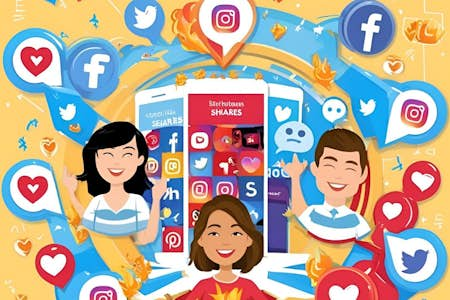Extended Reality (XR) — an umbrella term that encompasses Augmented Reality (AR), Virtual Reality (VR), and Mixed Reality (MR) — is steadily transforming the ways we work, learn, and enjoy entertainment. These immersive technologies are blurring the lines between the physical and digital worlds, bringing entirely new experiences to our screens and, in many cases, into our everyday lives.
While AR, VR, and MR each offer distinct experiences, they all share a common goal: to enhance, expand, or even reshape our perceptions. And as hardware and software rapidly evolve, XR applications are becoming more sophisticated, affordable, and accessible than ever before. Let’s dive into how each of these technologies is evolving and influencing industries ranging from gaming to education and workplace collaboration.
A Quick Refresher: AR, VR, and MR Explained
Before we explore the impact of XR, let’s briefly recap what each of these technologies entails:
Augmented Reality (AR): AR overlays digital information onto the real world through devices like smartphones or AR glasses. Popular examples include Snapchat filters and Pokémon GO, which blend digital visuals with real-world views.
Virtual Reality (VR): VR immerses users in a fully digital environment, usually with the help of a headset like the Oculus Quest. By blocking out the physical world, VR creates a truly immersive experience that can take users anywhere, from virtual offices to far-off galaxies.
Mixed Reality (MR): MR goes one step further by allowing digital objects to interact with the real world. Using advanced headsets like the Microsoft HoloLens, users can see and interact with 3D objects that appear anchored in their physical environment.
These technologies have evolved significantly from their early stages, becoming more versatile, affordable, and impactful. Here’s a closer look at how XR is changing our workspaces and play spaces.
Changing the Workplace: XR as a New Standard for Collaboration and Training
For many companies, XR isn’t just a novelty; it’s fast becoming a vital tool in training, design, and collaboration.
1. Transforming Training and Education
Training in fields like healthcare, aviation, and manufacturing has always been resource-intensive and risky. VR and AR are now helping companies tackle this challenge by providing safe, repeatable, and interactive environments for complex training. For instance, VR simulations allow medical students to practice surgeries without risking patient safety. In aviation, companies like Boeing use AR to guide workers through complex assembly processes, showing them step-by-step instructions directly in their field of view.
AR-based training, in particular, is useful for real-time guidance in complicated tasks. Imagine a field technician wearing AR glasses to receive live troubleshooting advice on-site, seeing instructions and diagnostic data overlaid on the equipment they’re working on.
2. Redefining Remote Work and Collaboration
With the rise of remote work, XR offers a promising alternative to traditional video calls and screen sharing. VR meeting platforms like Spatial and AltspaceVR provide virtual meeting rooms where team members, represented by avatars, can interact and collaborate in a shared space. This setup offers a more immersive and interactive experience than standard video calls, helping remote teams feel more connected.
Similarly, MR is allowing companies to merge digital content with physical spaces, making remote collaboration more intuitive. Engineers and designers, for example, can view 3D models of prototypes and discuss design changes as if they were in the same room, even if they’re miles apart.
3. Augmenting Product Design and Prototyping
In the past, creating physical prototypes was time-consuming and expensive. XR is streamlining this process by enabling virtual prototyping. With VR or MR, designers can interact with life-size models of their products, test functionality, and make modifications in real-time. This approach has proven especially useful in the automotive and architecture industries, where realistic prototypes are essential for evaluation and improvement.
Transforming Entertainment: XR as a New Playground
XR is redefining what’s possible in entertainment, taking experiences beyond the screen and into new immersive realms.
1. Gaming: A New Level of Immersion
Gaming has long been a testing ground for VR, and recent advances are making VR gaming more accessible and realistic. Platforms like the Oculus Quest 2 offer wireless VR experiences with impressive visuals, bringing users into fully immersive worlds. Players can physically move around, interact with virtual objects, and enjoy games that respond to their body movements — making VR gaming an unforgettable experience.
AR gaming, meanwhile, has turned the real world into a digital playground. Pokémon GO, which uses AR to bring Pokémon into players’ surroundings, marked a breakthrough in mobile gaming and continues to inspire similar games. With AR glasses and even smartphones, AR gaming can make any location a part of the gameplay, encouraging exploration and physical interaction.
2. Expanding Virtual Concerts and Live Events
XR is also making waves in the world of live entertainment. Virtual concerts, like those hosted in Fortnite and VRChat, have become a popular way for artists to connect with fans, especially since the pandemic restricted in-person gatherings. These virtual events allow fans to “attend” concerts as avatars, interact with other fans, and experience a new kind of digital performance space.
The possibilities for immersive entertainment go beyond just music. For example, theater companies are experimenting with VR performances, where users can “attend” shows as if they’re seated in a virtual auditorium. The immersive nature of VR allows viewers to feel present in the action, creating a richer and more engaging experience than traditional video recordings.
3. Augmented and Mixed Reality in Theme Parks
Theme parks are now integrating AR and MR to enhance the visitor experience. Disney, Universal Studios, and other major parks have started offering XR attractions where guests can see animated characters interacting with real-world surroundings or participate in AR-enhanced scavenger hunts.
Overcoming Challenges: What’s Next for XR?
While XR offers exciting possibilities, there are still hurdles to overcome. The hardware required for VR and MR remains costly and sometimes cumbersome, limiting accessibility. There’s also the challenge of creating content that’s engaging, interactive, and meaningful — something that requires substantial resources and expertise.
Privacy concerns are also becoming a focus, especially with AR and MR experiences that capture and overlay information about the user’s environment. Companies will need to strike a balance between personalization and privacy to ensure users feel comfortable in these immersive spaces.
A Glimpse into the Future
The evolution of XR is still in its early stages, and as the technology advances, so will its applications. The workplace of the future may be a mix of virtual and physical spaces, where colleagues and collaborators from around the world can interact as though they’re in the same room. Entertainment could become more interactive, enabling us to explore new worlds and connect with people in ways that are impossible today.
From life-saving training applications to immersive forms of entertainment, XR is set to become an essential part of both our work and leisure. As AR, VR, and MR technologies continue to develop and converge, the boundary between the digital and physical will blur even further, opening up new realms of possibility. The only question is: How ready are we to embrace this brave new world?











